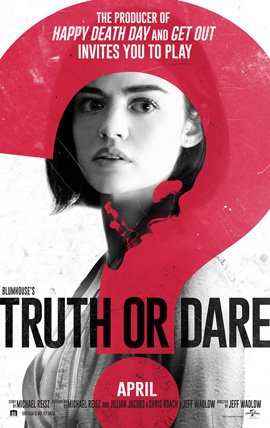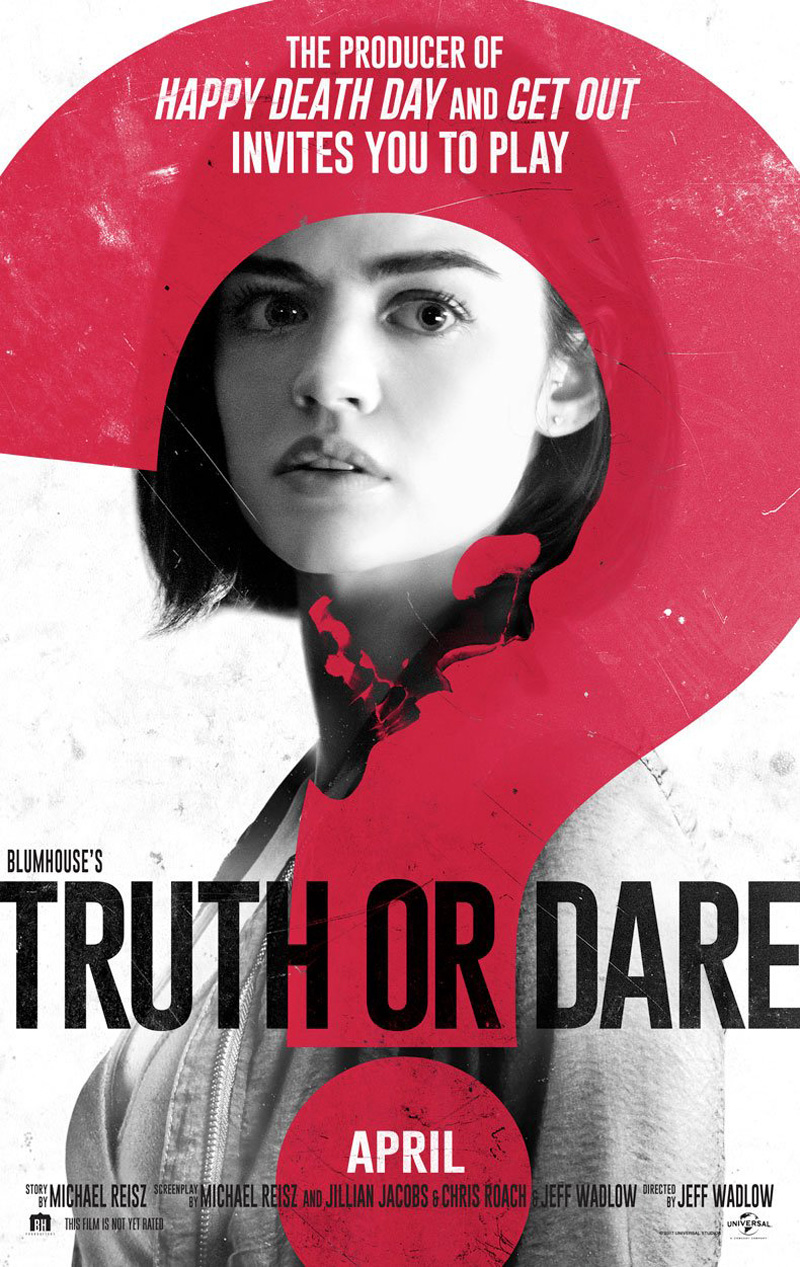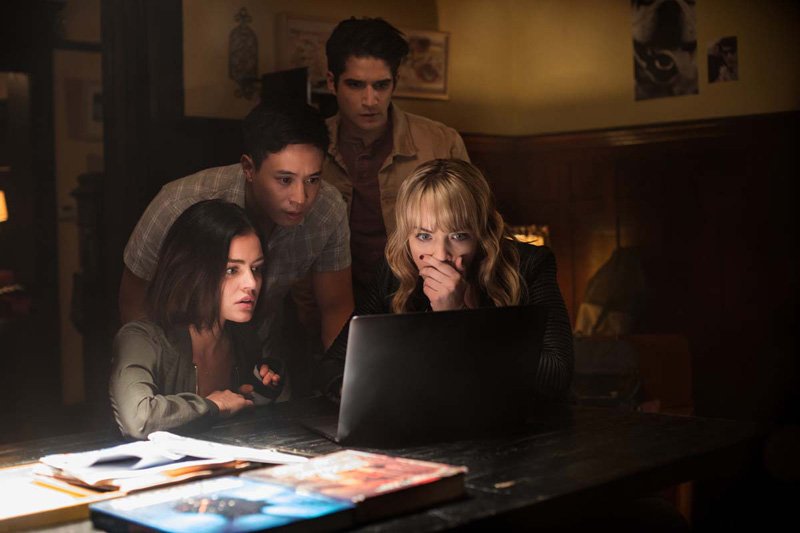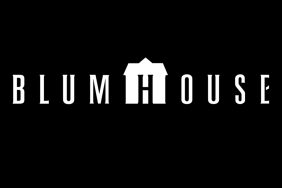 Rating:
Rating:
4 out of 10
Cast:
Lucy Hale as Olivia
Violett Beane as Markie Cameron
Tyler Posey as Lucas
Hayden Szeto as Brad
Landon Liboiron as Carter
Nolan Gerard Funk as Tyson
Sophia Ali as Penelope
Sam Lerner as Ronnie
Aurora Perrineau as Giselle
Tom Choi as Officer Han Chang
Gary Anthony Williams as the “Truth Or Dare” demon
Directed by Jeff Wadlow
Truth or Dare Review:
After twenty years of horror films, the Blumhouse standard for what these things are like has gotten pretty clear, sometimes with good results (Ouija: Origin of Evil, The Visit) and sometimes not (any Insidious film). [Get Out, though nominally a horror film, is far enough outside of Blumhouse’s normal style that we’ll call it a Whiplash-level outlier]. A group of young people inadvertently open or become involved with an ambiguous evil which begins picking them off one by one in between tragedy-inflicted character moments until finally the evil is confronted and/or banished. Or basically the horror movie template since approximately 1980. [To be fair, Blumhouse is far from the only company which does this, just currently the most successful and impossible to ignore]. So how does Truth or Dare fit into that?
Not well.
Olivia (Hale) and her college roommates are facing their final Spring Break before heading out into the real world and react exactly how you’d expect – driving down to Mexico for a week of drinking and debauchery. Hooking up with a handsome stranger (Liboiron), Olivia and her friends soon find themselves agreeing to break into an abandoned mission to play a game of Truth or Dare, because why not? Faster than you can say ‘poor judgment,’ the group discovers that the game is more than just a harmless pastime as strangers begin inundating them with requests for Truth or Dare back in California and if they refuse… well, it’s not pretty.
As horror film concepts go, it’s not a bad one and writer/director Wadlow (Kick-Ass 2) – along with three other credited writers – frequently uses the Truth aspect to force characters to unburden themselves of painful secrets. Even if it is tied to the notion of a character forcing the curse onto the protagonist to save themselves, a plot which draws inevitable comparisons to the far superior It Follows. The idea of a horror concept putting its characters through the ringer to intentionally make their lives better would be an intriguing deconstruction of the genre. It’s not at all what Truth or Dare is trying to do, but for a moment you can see it heading that way. Then it becomes clear that as intentional that is (it is definitely not an accident) it is also highly limited by the characters it is attached to who would generously be described as flat.
Though Olivia and her friends ostensibly have inner lives – best friend Markie (Beane) is haunted by her father’s suicide, closeted gay Brad (Szeto) is terrified of coming out to his father (Choi) – it’s all a mirage. Though there are only a handful of characters in the film, they are (in classic horror film style) each defined by a single characteristic. Worse, they are each only given a single action repeated over and over like an NPC in a video game, and undermining the film’s tension in the process. The first time Markie reacts to hidden tension with Olivia by storming away with the statement she never wants to see her again (and putting herself in danger in the process of course), it seems like a reasonable reaction given the situation and her known personality. The second time it comes across as forced and the third time it feels like cut and paste was hit on the script a few times too many.
More than one horror film has survived having weak characters by focusing on the scares themselves, but Wadlow’s aesthetic and scenario choices continually work against him. The Truth or Dare moments are supposed to be delivered directly to and for the characters – this is explicitly stated several times – and yet frequently they are delivered to the audience in a way the characters cannot be aware of. They are set up clearly to raise tension for the viewer but in the process break the rules laid out in the film and ruin suspension of disbelief. Even that in itself would be survivable if the Truth or Dare moment was genuinely scary. It’s a moment usually delivered by a possessed passerby taking on a demonic face and delivering the character’s doom. The demonic face effect is, in the most generous view possible, terrible. It stretches actors’ smiles and eyebrows into awkward clown grimaces which would make for an unrealistic Joker in a Batman movie, much less a supernatural villain I should be terrified of whenever it appears. It is more likely to cause peals of laughter than screams of terror and the film itself seems to be aware of this, frequently delivering its Truth or Dare statements through written words so that we don’t have to see the face.
None of what’s wrong with Truth or Dare is anything which hasn’t been wrong with other horror films in the past, which is probably the worst thing that could be said about it. None of that should, or will, get in the way of people who like this sort of thing from enjoying it. Which, as I think about it, is actually the worst thing that could be said about it.
Truth or Dare
-
Blumhouse's Truth or Dare

-
Blumhouse's Truth or Dare

-
Blumhouse's Truth or Dare

-
Blumhouse's Truth or Dare

-
Blumhouse's Truth or Dare

-
Blumhouse's Truth or Dare

-
Blumhouse's Truth or Dare

-
Blumhouse's Truth or Dare

-
Blumhouse's Truth or Dare

-
Blumhouse's Truth or Dare

-
Blumhouse's Truth or Dare

-
Blumhouse's Truth or Dare

-
Blumhouse's Truth or Dare

-
Blumhouse's Truth or Dare

-
Blumhouse's Truth or Dare

-
Blumhouse's Truth or Dare

-
Blumhouse's Truth or Dare

-
Blumhouse's Truth or Dare

-
Blumhouse's Truth or Dare

-
Blumhouse's Truth or Dare











